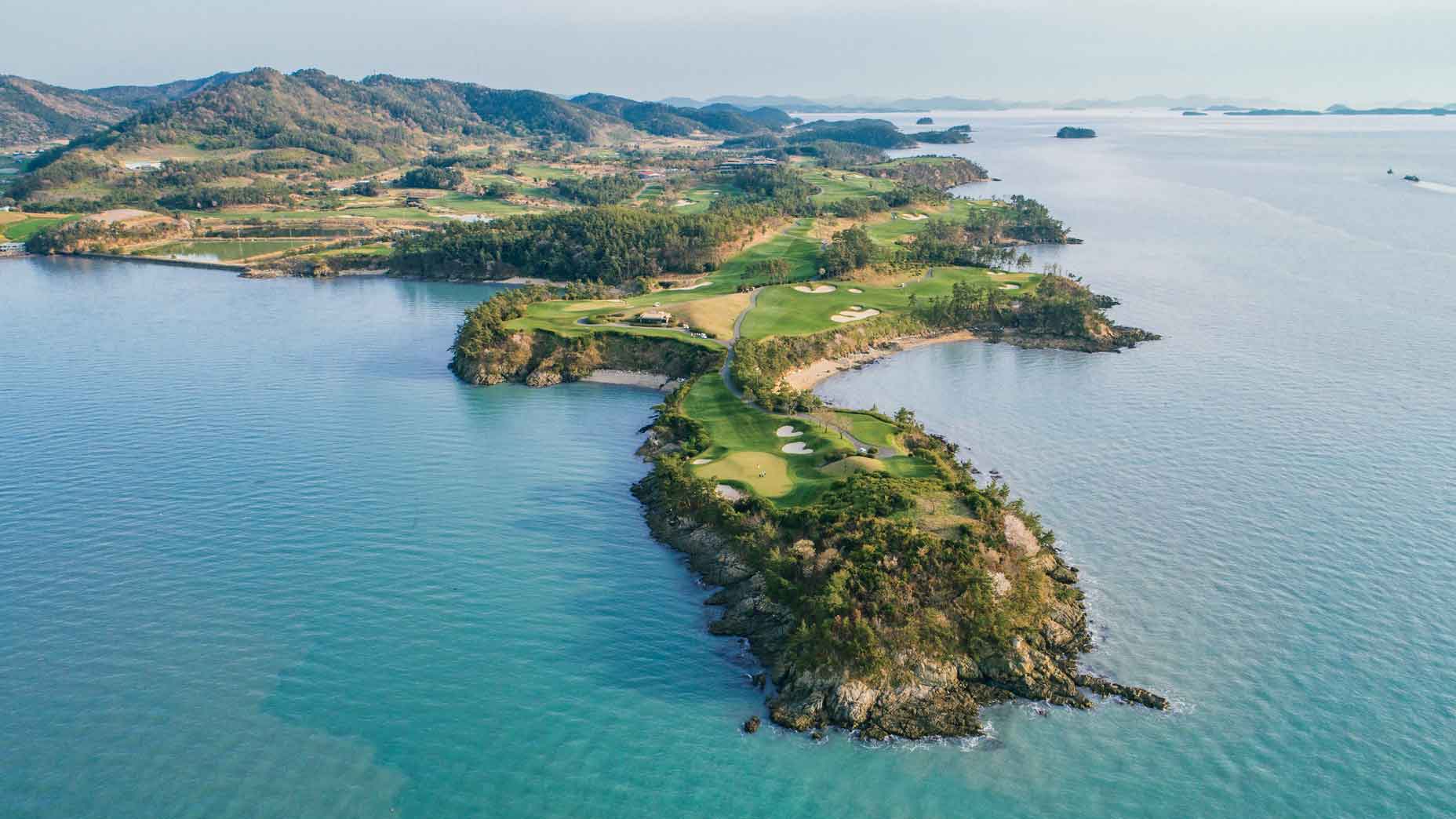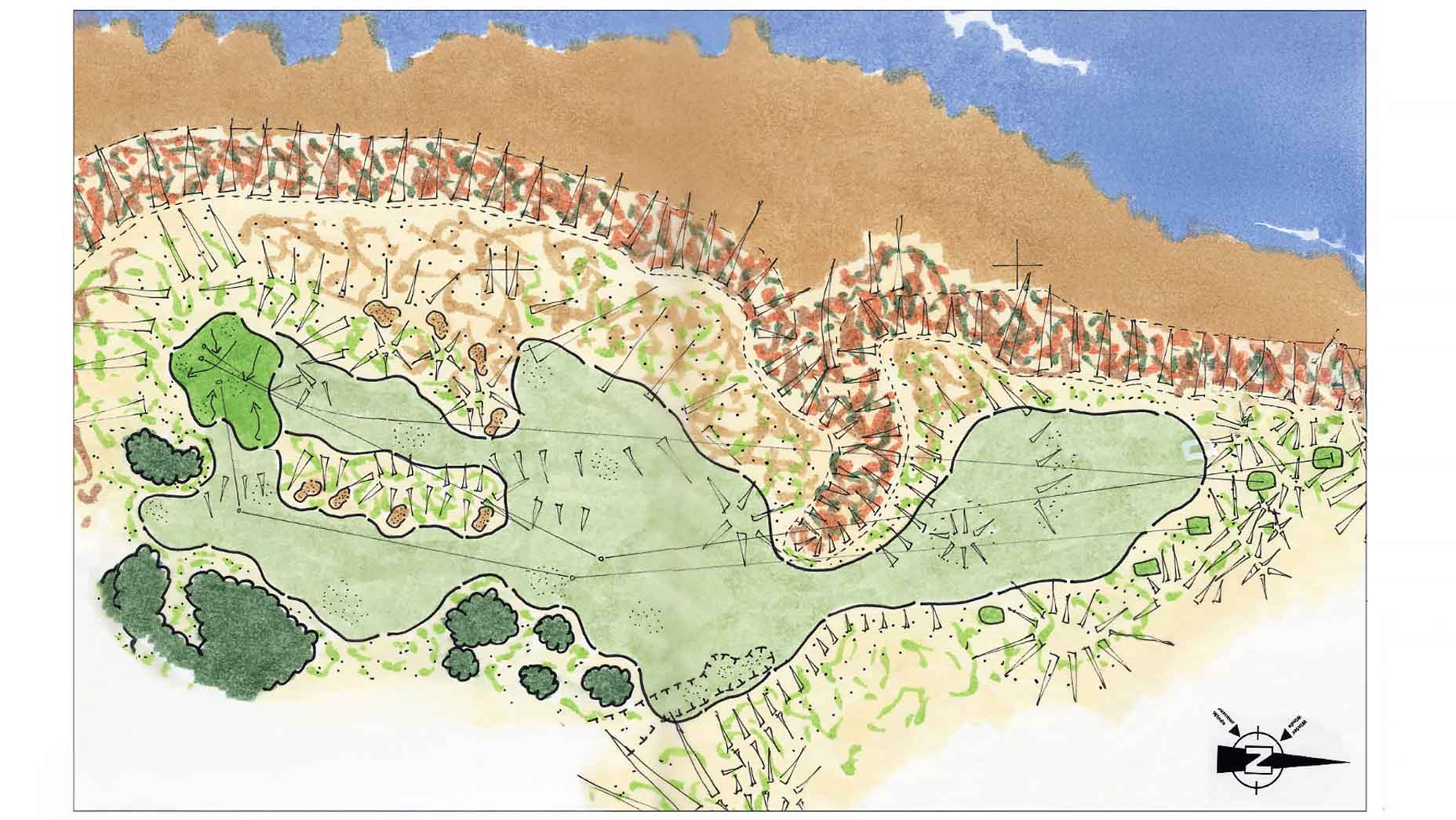In the 1950s, South Korea was one of the poorest countries in the world — and now it’s one of the wealthiest. That speaks to the hardworking nature of its people. Whatever they set their minds to, quality inevitably follows with a distinctive South Korean twist. To grasp how that has manifested itself in golf course design, you first need to know a bit about the country’s geography.
South Korea is roughly the size of Indiana, and, although it’s comprised of 3,400 mostly uninhabited islands, 70 percent of its terrain is mountainous. Yet it’s home to 51 million people and about 500 golf courses. (Indiana, with a population of just 7 million, has a little over 400 courses.) Against that backdrop, you can appreciate that land is at a premium. For space reasons, the best South Korean tracks are typically at a distance from Seoul, and they capitalize on the country’s uncommon beauty and natural features.
Take members-only Nine Bridges, the top-rated course in South Korea (and No. 87 on our list of the Top 100 Courses in the World), which is set on an expansive property on Jeju Island, south of the Korean peninsula. One of GOLF’s course-rating panelists, Adam Messix, paints a vivid picture of the place.
“Nestled on a beautiful mountain plateau above Jeju City, Ron Fream and David Dale’s design has standout holes throughout,” he says.
“The risk-reward par-5 3rd sets the tone for the round, and the center-line bunkers on the 6th create thrilling options off the tee. The 8th is an amazing, short par 4 with a cleverly designed green complex that proves tricky for the Tour players at the annual CJ Cup. The angled tee shot on the 11th is both tempting and challenging, where birdies and double bogeys — is there any greater complement? — come in equal numbers. The finishing hole is option laden, with multiple places to position your second shot and the potential of a heroic long carry to set up eagle on the picturesque island green. Strategic, photogenic, challenging and fun, Nine Bridges strikes all the right chords.”

Situated off the country’s southeast coast, South Cape Owners Club offers dream golf along its rugged cliff shoreline, with sea views from every hole. American architect Kyle Phillips produced this masterpiece — a gorgeous routing with dramatic moments on both nines that have you hitting over and beside the ocean several times. Fashion magnet J.B. Chung was the visionary behind the ultra-luxe resort’s creation, and his custom music room is the perfect place for post-round chill-outs.
Located northeast of Seoul, Whistling Rock is nestled into the mountains, with interrelated rushing streams and ponds serving to accent the hilly terrain. It’s worth noting that the name Korea stems from Koryo, the dynasty that ruled for nearly four centuries. Loosely translated, it means “land of high mountains and sparkling streams.” When the South Korean conglomerate Taekwang Group decided to develop a private golf club in 2006, its chairman’s marching orders were to create a place that achieved the “harmony of art and nature.” Americans Ted Robinson Sr. and Jr. designed the initial 27 holes and Eric Iverson later refined it with some fabulous greens and artful bunkering.
Even when land isn’t easily available, South Koreans find a way. That’s what happened at the mainland’s Jack Nicklaus Golf Club Korea, where property was reclaimed from the sea to build a course that hosted the 2015 Presidents Cup. It’s a true urban course with skyscrapers, luxury condos and a bridge serving as distinctive backdrops.

South Korea’s upper-end courses — which, by design, are breathtaking and highly exclusive — include massive, architecturally stunning clubhouses of the sort not found anywhere else. Most of the world’s clubs would crack under the expense of these places. Initiation fees can run well over $1 million. But South Korea’s elite courses are often linked to mighty corporations. Example: CJ Group’s support of Nine Bridges and the equally impressive Haesley.
The experience of playing golf at the country’s best courses — which also include Pine Beach and Robert Trent Jones Jr.’s Anyang CC — is a celebration of South Korea’s beauty and prosperity. On the public front, the pickings are slimmer. American architects, including Kyle Phillips and Jim Engh, have built public-access courses, but public golf is still costly. Remedying that situation isn’t easy. For now, a lot of the golf in South Korea is, as my colleague Josh Sens has described, found at multilevel driving ranges and the thriving sim scene.
Like we said, South Koreans are irrepressibly industrious.











